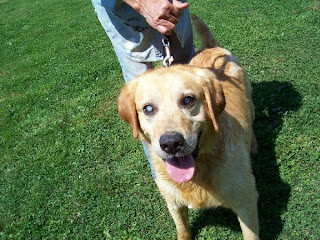The question of "what would you do?" is a good one. It indicates trust and partnership in the veterinarian-client relationship. Why it makes me cringe is because it is so darned hard to answer sometimes!
Rarely do medical conditions have predictable black-and-white outcomes. As the veterinarian, each set of test results presents a complex algorithm. An algorithm is a flowchart of "if this, then that" scenarios that help us reach a diagnosis, plan treatment and assign a prognosis (i.e., outcome). For example, if the pet's kidney values are markedly elevated and the red blood cells are decreased and the pet is severely dehydrated, then the expected outcome of treatment is much different than if the kidney value elevation is the only abnormality. Sometimes, just as importantly, the algorithm for deciding a pet's care also includes financial considerations: if one has a big piggy bank, then one might choose to do a certain diagnostic test or treatment.
When asked to place myself in my clients' shoes, I want to give an honest answer. The trouble is, how I believe I would act if faced with the same predicament is not necessarily how I will act when the time comes. Considering the situation from the client's point of view works because I can share my personal rather than clinical take on the situation. But I often feel as though I'm not being entirely truthful. Can I really begin to guess what I would do if it were my pet?
This past Thursday I was faced with the worst choice my clients have to make. Our surly spaniel GrrrD, limping and crying for several days despite a thorough workup and aggressive pain management, became terribly lethargic. An x-ray of her suddenly distended abdomen showed several abnormalities which may or may not respond to surgical intervention. So, for this 13-year-old dog with multiple, seemingly unrelated symptoms and obviously suffering...what should I do?
I did what my clients do. I asked a veterinarian, my dear friend and collegue Dr. Trisha Fasse, for advice. We talked for some time about GrrrD's symptoms, her age, her test results and my feelings. My inner debate raged on. GrrrD the Snerd was my husband's puppy since college. She was a steady part of countless apartments and homes. She was our "kid" before we had kids. How could I not do everything and anything possible for her now?
Resolution finally came when Dr. Fasse reversed the age old question and asked me, "What would you do if it was your client's pet?" It became clear. The Snerd was suffering. She had inexplicable symptoms. She was not responding to pain medications. The likelihood of extending the length and quality of her life through exploratory abdominal surgery was highly questionable. Surgery in her condition was risky and I expected a difficult recovery. And just because we could do everything medically possible doesn't mean we should.
 |
| We will reflect on the many wonderful memories we share of GrrrD the Snerd. |


